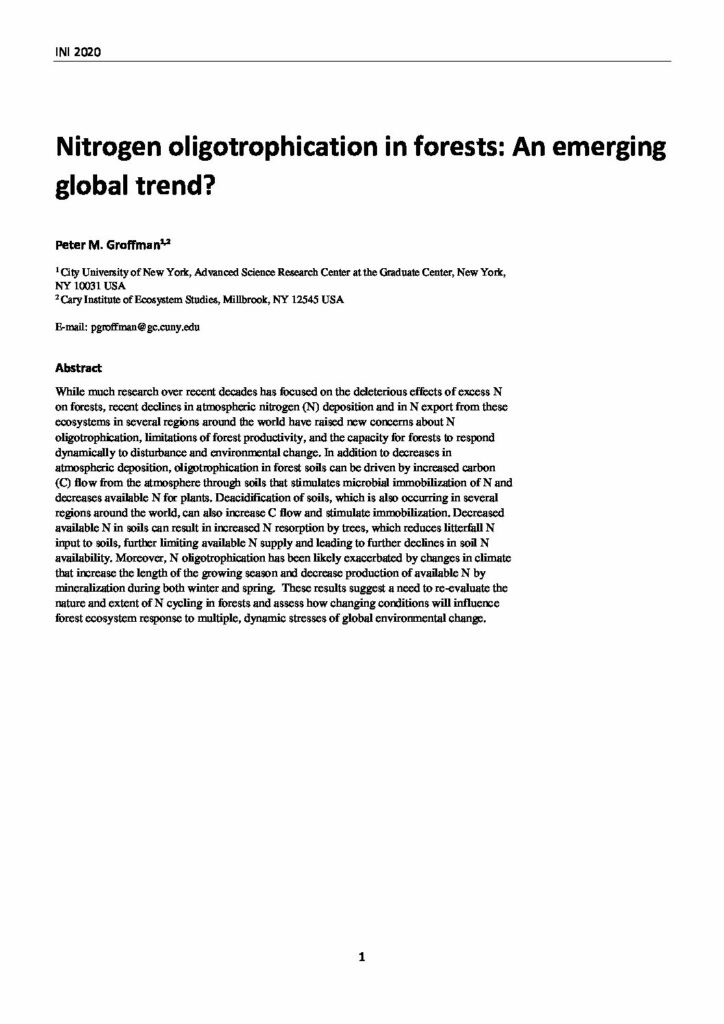Nitrogen oligotrophication in forests: An emerging global trend?

While much research over recent decades has focused on the deleterious effects of excess N on forests, recent declines in atmospheric nitrogen (N) deposition and in N export from these ecosystems in several regions around the world have raised new concerns about N oligotrophication, limitations of forest productivity, and the capacity for forests to respond dynamically to disturbance and environmental change.
In addition to decreases in atmospheric deposition, oligotrophication in forest soils can be driven by increased carbon (C) flow from the atmosphere through soils that stimulates microbial immobilization of N and decreases available N for plants. Deacidification of soils, which is also occurring in several regions around the world, can also increase C flow and stimulate immobilization.
Decreased available N in soils can result in increased N resorption by trees, which reduces litterfall N input to soils, further limiting available N supply and leading to further declines in soil N availability. Moreover, N oligotrophication has been likely exacerbated by changes in climate that increase the length of the growing season and decrease production of available N by mineralization during both winter and spring. These results suggest a need to re-evaluate the nature and extent of N cycling in forests and assess how changing conditions will influence forest ecosystem response to multiple, dynamic stresses of global environmental change.
